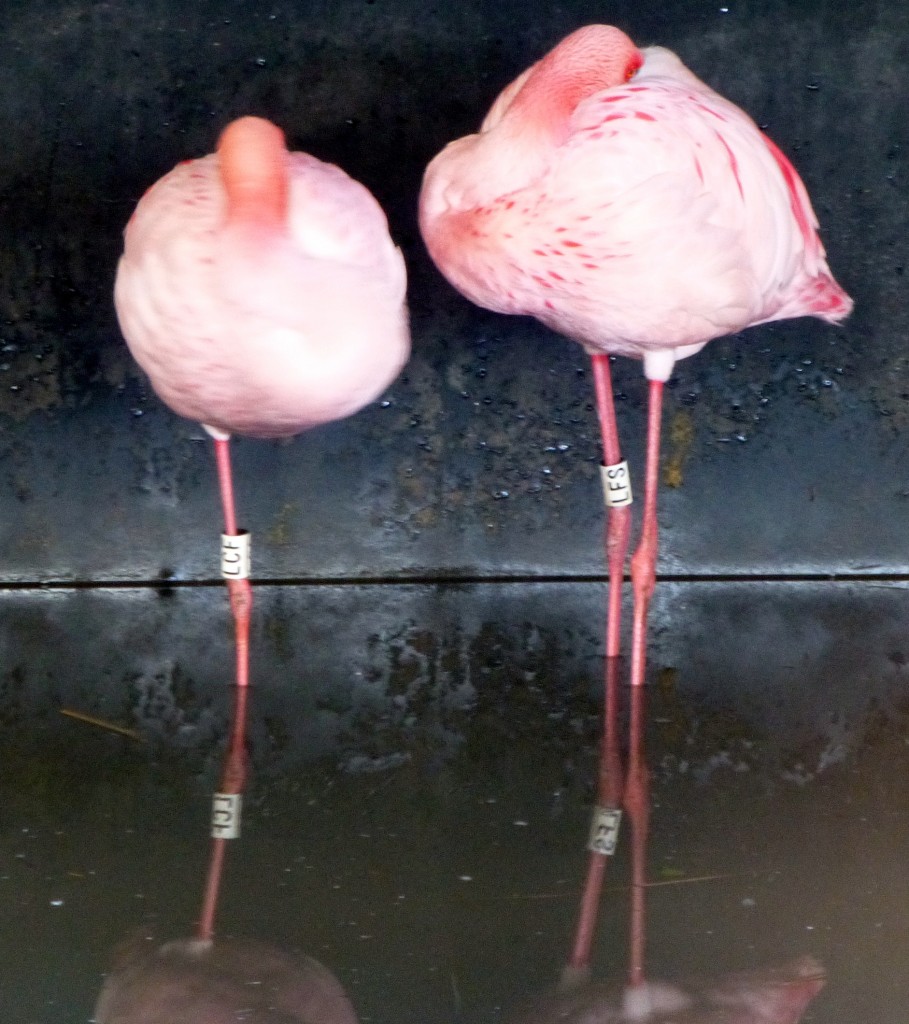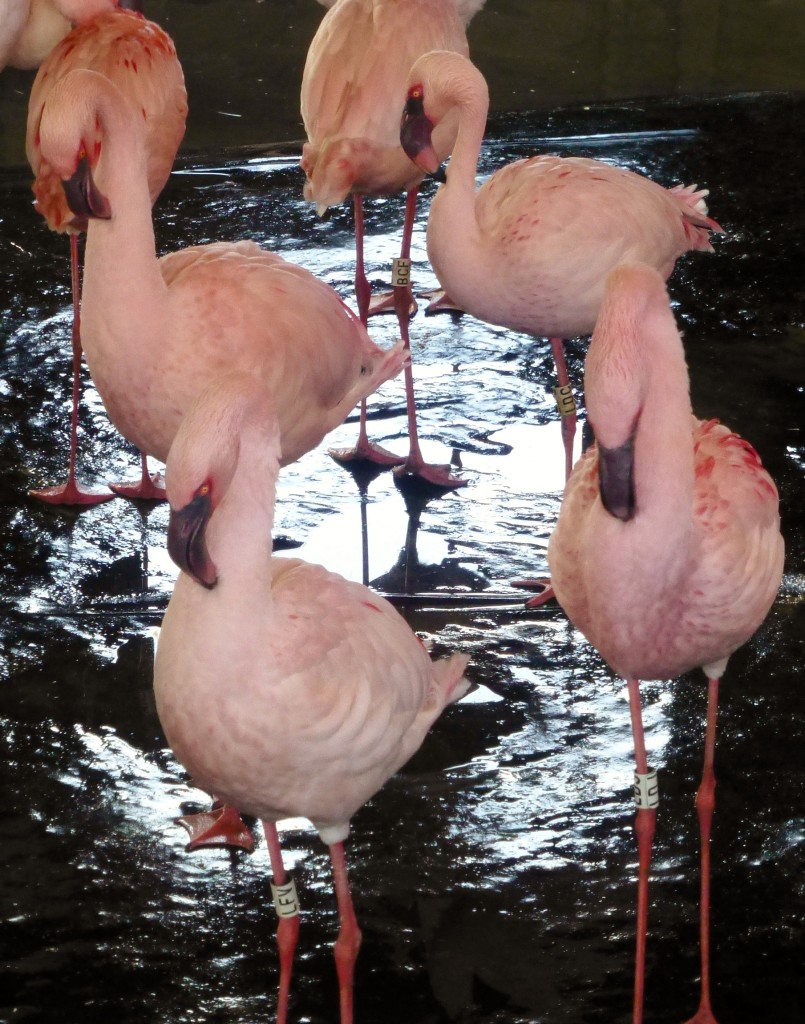Don't walk past the lessers!
The lesser flamingos really are worth more than a second glance. Especially at this time of year when they look so beautiful. You can get some lovely close-up views of the this flock at present as they are inside their house, and the birds are very obliging by standing right infront of the windows. Just move slowly and don't bang on the glass. Nobody like to be disturbed in their own home! If you hang on for long enough, you'll be rewarded with some interesting insights into lesser flamingo behaviour.

As it's coming into the breeding season, you can easily spot different pairs of flamingos forming, as shown in the photo above. Even in these tiniest of flamingos, you can still see the size difference between boy and girl. And just to clarify a misconception about this flock, no they are not baby flamingos! Yes, they are tiny but this is fully grown. We don't deliberately keep them small just so they look cute! What the lesser lacks in size, it makes up for in panache. It's beautiful crimson plumes (especially its scapular, "shoulder", feathers) and its amazingly choreographed breeding dances really does means it can give the big boys a run for their money.
Watching the birds, you will be able to see who is influencing the behaviour of the other flamingos in the flock. If you watch the short clip, below, of the lessers displaying, you will see one bird in the middle of the picture (ring code "LDX") whose behaviour has a profound influence over the other flamingos. LDX suddenly does a wing-leg stretch and flashes open its black primary feathers to the other birds. This has a ripple effect and suddenly a whole gang of flamingos are displaying, including the very special bird (ring code "BCF") who is the youngster hatched in 2006. And what a fine young man he has turned into!
[yframe url='https://www.youtube.com/watch?v=mk8D15msUW0']
For those with an eagle-eye, you might see some of the more excitable birds performing some stranger moves with their heads and neck. This is called a "broken neck" display, and often occurs when the flamingos are getting ready to go marching (the mass movement of a lot of birds altogether). You can see a photo of this broken neck display below. So as winter finally melts into spring and the days become longer and warmer, expect to be able to see more such action from the pink birds as the weather turns more to their liking.




